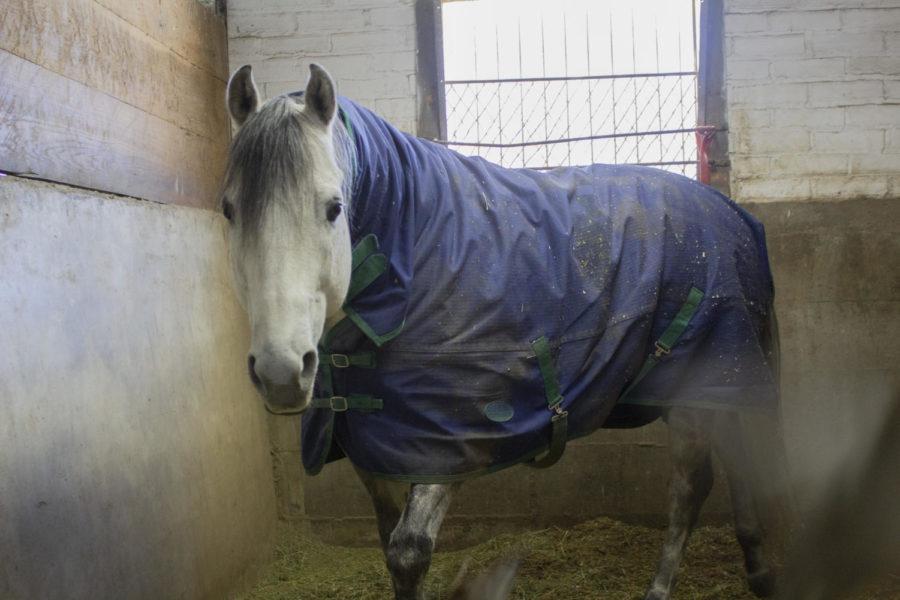Animals persevere through the cold at Iowa State learning farms
Kennedy DeRaedt/Iowa State Daily
The horses in the horse barn are wrapped in horse blankets to keep them safe from the cold temperatures.
February 18, 2019
With the drastically low temperatures and brutal winter Ames has experienced in the past few weeks, the Iowa State Animal Farms have put in extra work to ensure all of the college’s animals are safe and healthy.
For learning purposes, Iowa State has multiple farms that house several different species such as equine, sheep, beef cattle, dairy cattle and swine. These farms are run by students and faculty that have the animals’ best interests in mind, but the winter months can make chores and operations of the farms more time-consuming and difficult.
Various equipment is used on the farms to make winter tasks easier and more efficient.
“We have some animals that are inside and some animals that are outside,” animal science farms director Ben Drescher said. “We have a truck with a plow and a number of tractors and skid loaders to move snow, bed and feed the animals.”
The main concerns in the winter are keeping the animals out of the direct wind and making sure they have access to food and water and dry bedding at all times. In the extreme cold, some extra precautions must be taken to ensure the safety of the animals.
“We do extra bedding and feed, which we have used a lot of in the last month, even more than we have in the last two years,” Drescher said. “Even on days where we didn’t have school, my crew was out taking care of the animals.”
For the managers, preparation is the best thing to do, which includes setting up and planning when winter weather is in the forecast.
“Sheep, swine, beef cattle and some dairy cattle have access to outdoor runs, windbreaks and waters with heat tape,” Drescher said. “Sometimes it comes down to students and managers going out and busting some ice off the top of the water and scooping out feed bunks.”
Horse farm manager Nikki Ferwerda said that a majority of the horses at the equine farm go outside everyday.
“Most horses are well equipped for the cold with their long coats, while those with shorter hair are provided winter blankets for extra insulation,” Ferwerda said.
The summer is spent planning for winter, as hay and bedding are made and stored to be available for the animals later in the year. The corn stalk and straw bedding are made in collaboration with the agronomy farm.
“Animals need a way to get out of the brutal wind and stay dry, have water and food,” Ferwerda said. “If you can do that, most of our farm animals are good at surviving cold temperatures.”
Biological differences between animals and humans help the animals to have their own layer of protection for themselves.
“We had people inquire about the safety of the horses but I think we have to remember that they have a body full of hair, which we don’t have,” Ferwerda said.”Their hair acts as our winter gear, helping them be less fragile than we are.”
















